NYC’s Forgotten ‘War on Christmas Trees’
Discover how an obscure holiday crackdown affects festive street vendors today!


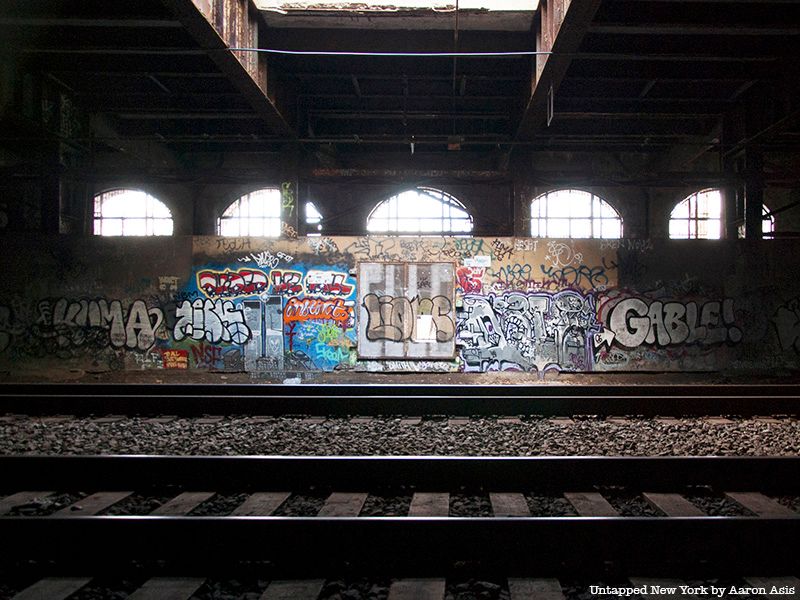
While some of New York City’s more spacious boroughs, such as Queens and The Bronx, boast a long list of abandoned locations, many New Yorkers may not know that the bustling borough of Manhattan has a few inactive spots itself. From graffiti-filled tunnels to cultural hubs to historic theaters, there are many areas throughout Manhattan that are abandoned and ready for you to discover. While some edifices are partially demolished and others have the potential and support to be redeveloped, several today simply lay forgotten in the heart of Manhattan. Keep an eye out as you walk the Manhattan streets or ride the subway for one of the 10 abandoned spots on this list.
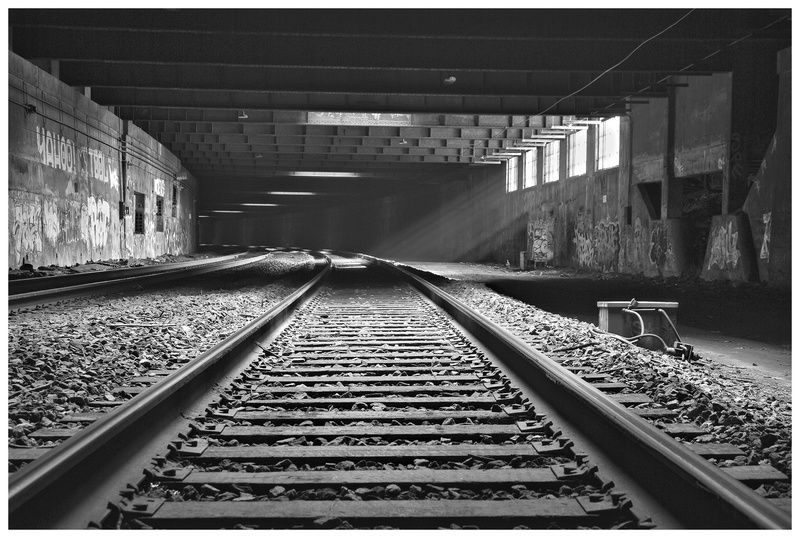
Located underneath Riverside Park on the Upper West Side, the Freedom Tunnel is one of the city’s most frequented off-limits transportation spots. According to photographer Will Ellis’ book Abandoned NYC, the Freedom Tunnel was first constructed as part of Robert Moses‘ Westside Improvement Project to address the problem of “Death Avenue,” a ground-level railroad track responsible for the deaths of several pedestrians. However, once the tunnel was completed, the rise of trucking made the track largely obsolete.
Many homeless people discovered the abandoned area by the mid-1970s, and hundreds resided there through the 1980s. However, in the 1990s, Amtrak began laying new tracks, and many squatting there were forcibly removed by the New York Police Department in 1996. Today, the tunnels are remarkably clean, with the only signs of life from the graffiti on the walls. The graffiti of artist Chris Pape, nicknamed “Freedom” is the namesake for the tunnel. His graffiti recreated the works of Goya and Michelangelo and has remained on the walls for several decades before Amtrak began to paint over it in 2009.
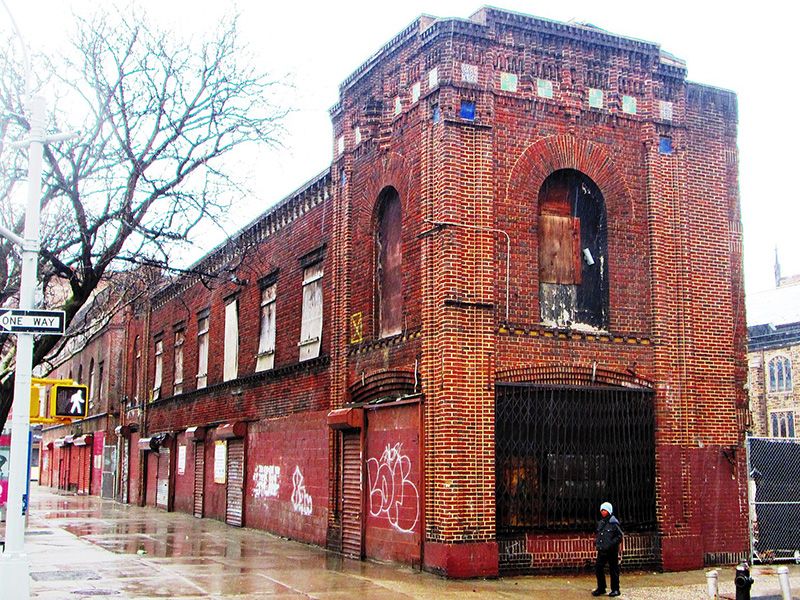
The Harlem Renaissance Ballroom was constructed in 1924 in Harlem, which was a center for Black culture in upper Manhattan. The Ballroom, nicknamed the “Rennie,” held parties, concerts, and film screenings in its casino and a 900-seat theatre. Many came to the ballroom to dance to live jazz music. However, it was also a spot for professional basketball, as The New York Renaissance, also known as the Renaissance Big Five, played on the dance floor which was converted into a court, and set a record of 88 consecutive wins.
According to Abandoned NYC, the Renaissance Ballroom shut down in 1979 when it was unable to keep up with the new clubs popping up around the city. The Abyssinian Baptist Church bought the venue in 1991 with the hopes of renovating the spot and restoring the former community space. However, this plan did not pan out and changed in favor of the development of more expensive condominiums. While the former theater spot is now an empty lot, parts of the ballroom including the coat check area still remain.
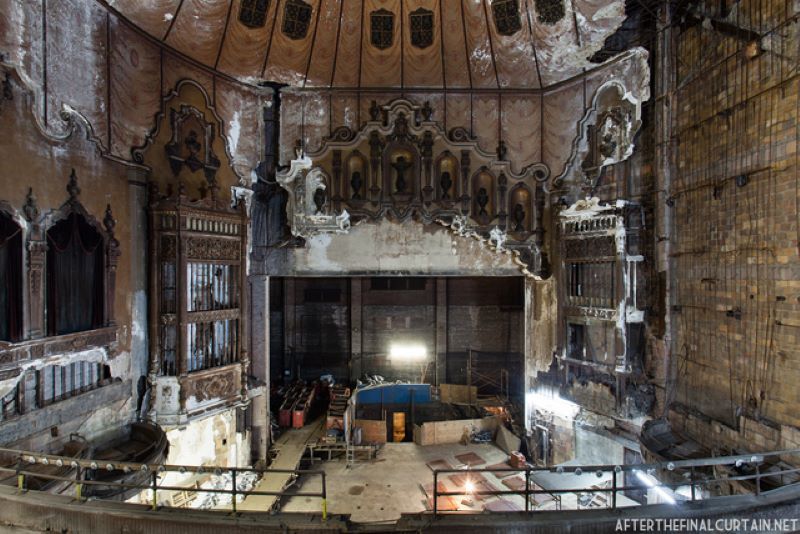
Located at 31 Canal Street, Loew’s Canal Theater was built in 1927. At the time of its construction, the theater was New York City’s second-largest theater, boasting 2,314 seats. Loew’s sold the theater to the Mayer & Schneider Circuit in 1929, though it quickly went bankrupt and was resold back to Loew’s within the year. The theater, designed by Thomas Lamb, was known for showing lesser-known films and serials.
Though Loew’s Canal Theater closed in the 1950s, much of its decor remains in good shape. The facade of the building’s lobby has since been named a city landmark. Following design trends observed in various theaters that Lamb built, the theater’s floors and blind openings are covered in terra cotta. Lamb elevated his design practices through the inclusion of griffons, eagles, and fanciful sea monsters on the cornice line, which stands above the roof line.
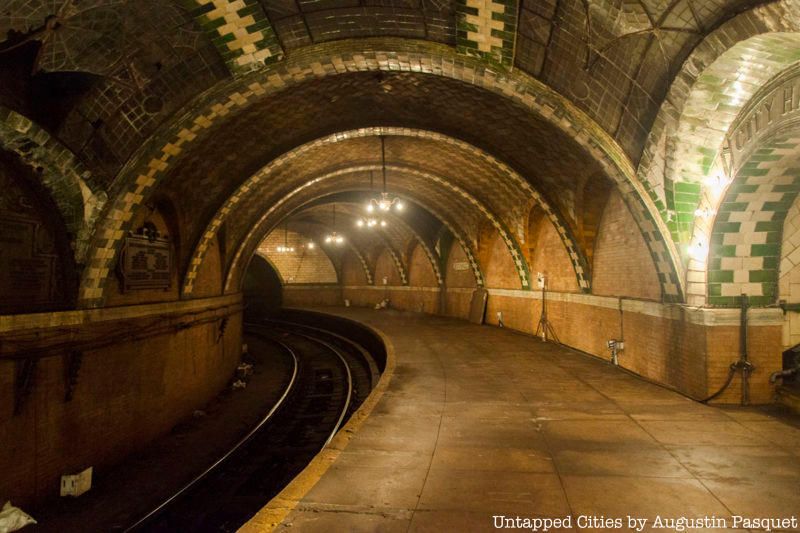
Decommissioned in 1945, this is a station unlike any other in New York, filled with stained glass, Roman brick, tiled vaults, arches, and brass chandeliers. the station was once the southern terminus of the Interborough Rapid Transit (IRT), which ran from City Hall to Grand Central, across 42nd street to Times Square, and all the way north to 145th Street along Broadway. The design reflects the values of the City Beautiful architectural movement that believed beautiful architecture could engender a better civic society. The main consulting architects on the IRT stations were George Lewis Heins and Christopher Grant LaFarge. The glass skylights were made by R. Guastavino & Co.
The curvature of the platform could not accommodate the longer trains we see today without extensive renovations, so the station was decommissioned in 1945 and is now one of the city’s most fascinating abandoned places. The station was designated an interior landmark in 1979. You can get a glimpse of the station by joining our tour of NYC’s underground subway.
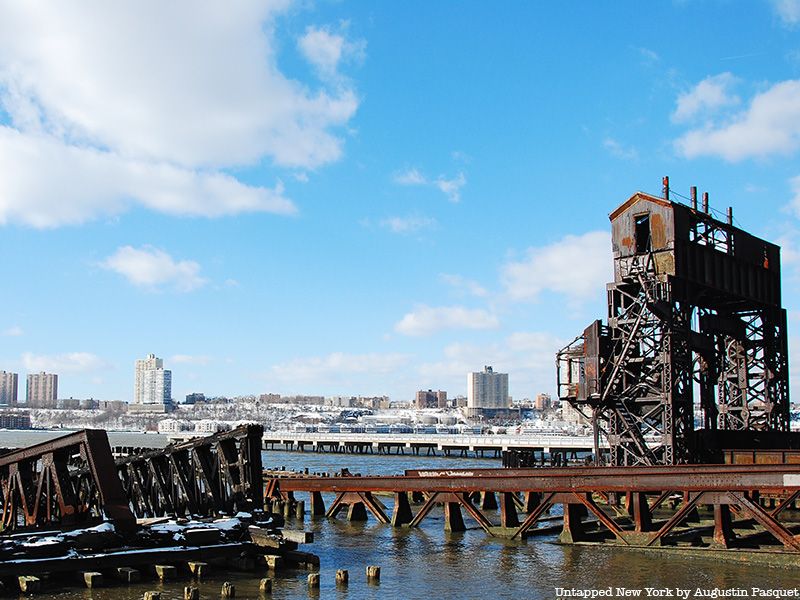
Located on W. 69th Street, this bridge was once a transfer terminal for the West Side Line of the New York Central Railroad which allowed for freight transportation. The bridge was formerly floating in the Hudson River but it has stabilized in recent years. Over 15 years ago, plans were proposed to turn the bridge into a ferry terminal. However, in 2008 the New York State Department of Environmental Conservation resisted this plan as it would endanger the aquatic life in the area.
Plans for the reconstruction of the bridge by the New York City Department of Parks & Recreation have been in progress since March of 2015. Though the design process is completed, the reconstruction is experiencing COVID-19-related delays. The project still must undergo procurement and construction.
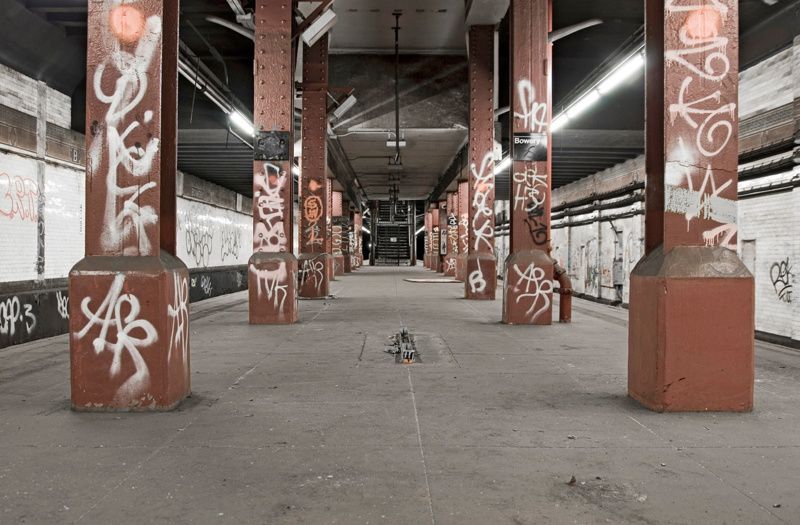
The abandoned Bowery Station platform was originally designed with four tracks and two island platforms. However, after extended use and decay, only two tracks at this station are still in operation. While renovations in 2004 removed one of the tracks, another remains inactive. One of the clearest signs that this platform is abandoned is that the space is completely devoid of benches.
The Bowery Station Platform received some activity several years ago, as the spot was used by the NYPD to conduct terrorist drills. Extending use to the cultural realm, a graffiti artist by the name of “VEW” created a Star Wars-themed Anti-ISIS graffiti mural on a wall of the abandoned station to show antagonism towards ISIS and solidarity with Paris in wake of the once recent terrorist attacks.
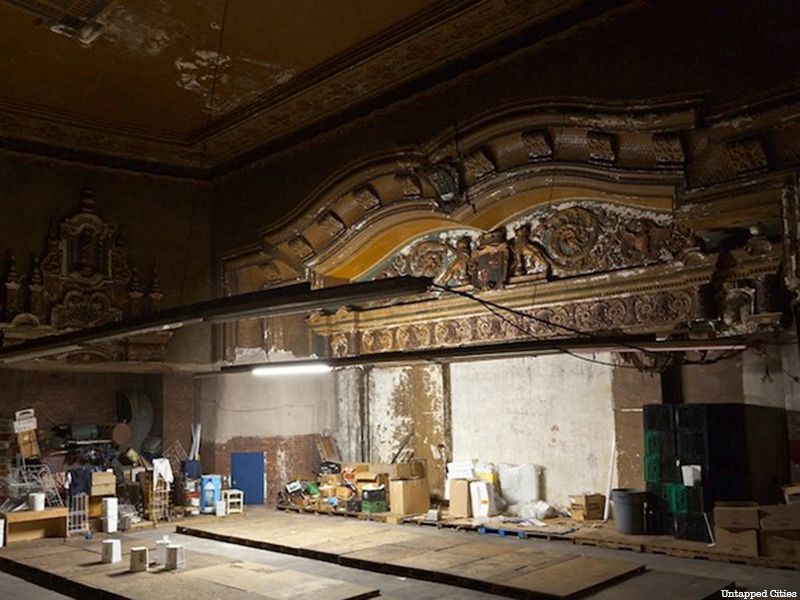
The Hollywood Theatre, residing on the East Village‘s Avenue A between 6th and 7th Streets, first opened on March 11, 1926. The theater had several different owners during its years of operation. First, it was owned by the Mayer & Schneider Circuit, then RKO, and finally Loew’s before it was eventually closed in 1959.
The Hollywood Theater’s orchestra and lobby have since been converted to retail space, with the orchestra converted into a health food store called the East Village Farm and the lobby laying abandoned for the past several years. Much of the theater’s exterior as well as the fire escape still remain. Unfortunately, the spot’s demolition began in 2015.
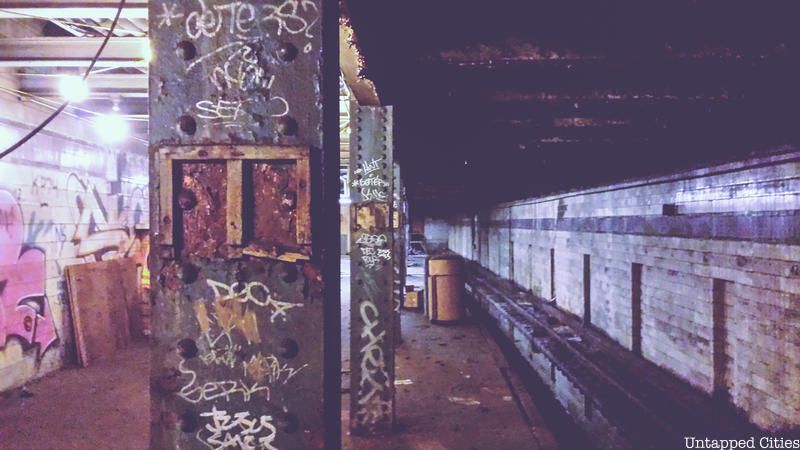
Though many wonder why the lower level of the A/C/E track was constructed under the Port Authority, as it never operated as part of the IND or IRT systems, it was used between 1959 and 1981 as the origin for the special Aqueduct Racetrack train. This transit path provided access to the Rockaway Amusement Park as well as football games at the Polo Grounds in upper Manhattan.
According to NYCSubway, the platform is on the southbound side with “one track, underneath the downtown local track on the upper level, and one side platform underneath the island platform.” By 2017, the entrances had all been sealed, except for one under a trap door on the “south end of the southbound platform,”
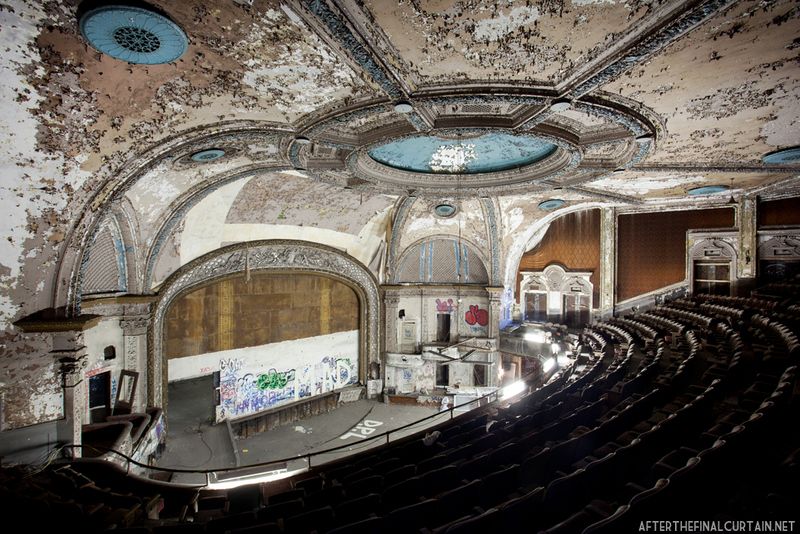
Moss and Brill’s Hamilton Theater, which was later renamed the RKO Hamilton Theater, is located in Manhattan’s Hamilton Heights. The theater opened on January 23, 1913 and was designed by Thomas Lamb, who also designed the Loew’s Canal Theatre. Vaudeville operator Benjamin Moss and theater developer Solomon Brillis commissioned the theater, though when Moss retired in 1928, it was converted to a movie theater.
It is notable for being one of the first theaters in New York City to exclusively play films. However, Hamilton Theater stopped showing films in 1958. Following this change, a church bought the theater in 1965 before it was sold again sometime in the mid-1990s. Since the Some of the theater was used for retail space while other parts were used as a warehouse. In 2000, the exterior of the theater, which is similarly marked by Lamb’s signature terra cotta, was named a city landmark.
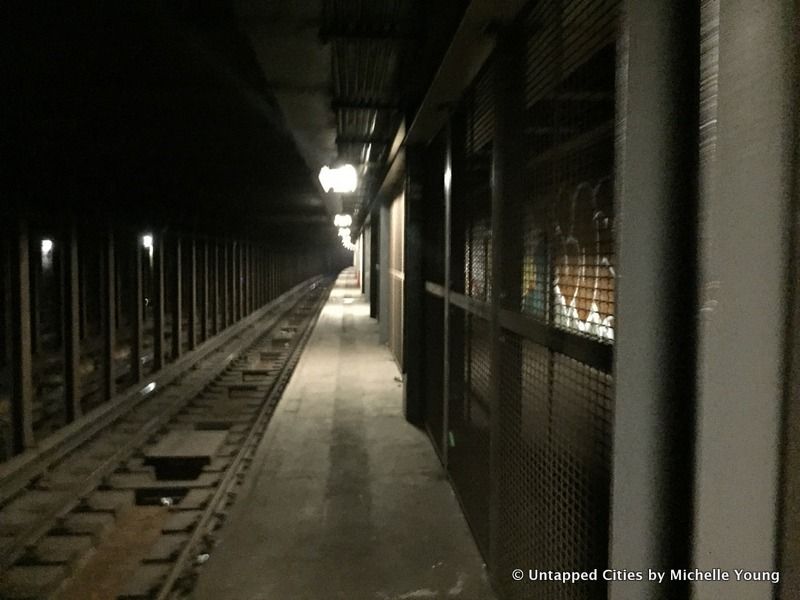
In 2012, renovations at the Bleecker Street subway stations — necessary to allow for transfers to the uptown 6, as it was previously only available for downtown 6 transfers — necessitated a southward shift in the subway platform as well as an extension northward that rendered part of the platform obsolete.
When departing on the 6 train, you can still see the old, unused platform and some old advertisements from the year it was abandoned. The 2012 renovation walled off the platform, and the mid-century green tiling along the platform has now mostly been covered over with graffiti. Though you can still see the platform if you look very carefully. The next time you find yourself rolling through north to Astor Place or south to Spring Street, be sure to keep an eye out for this abandoned station.
For more abandoned NYC in different boroughs, check out 30 Abandoned Places in New York City, 9 abandoned places to discover in The Bronx, 10 abandoned places to discover in Queens, and 10 abandoned places to discover in Brooklyn!
Subscribe to our newsletter